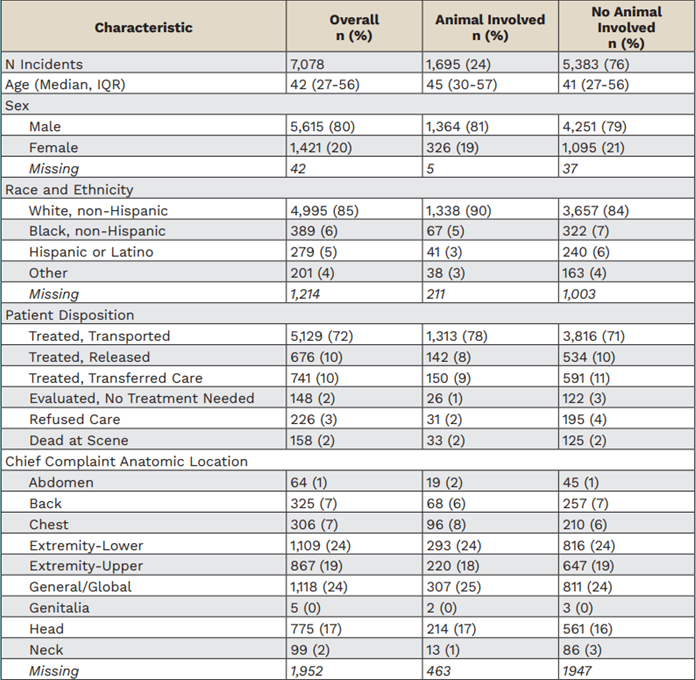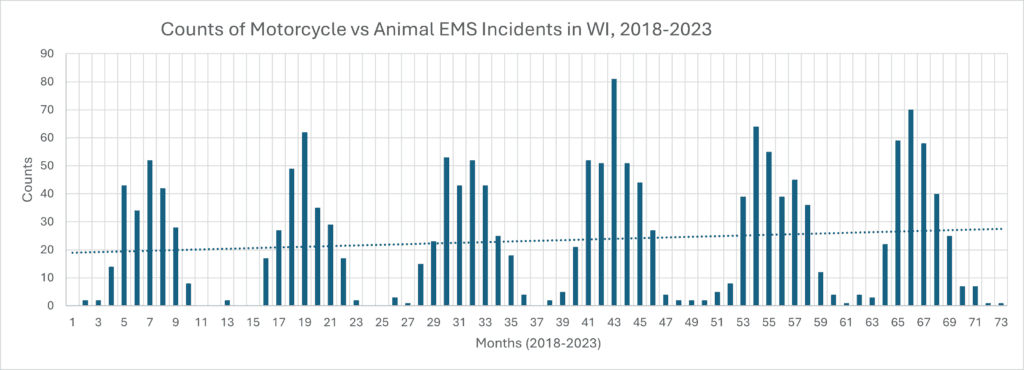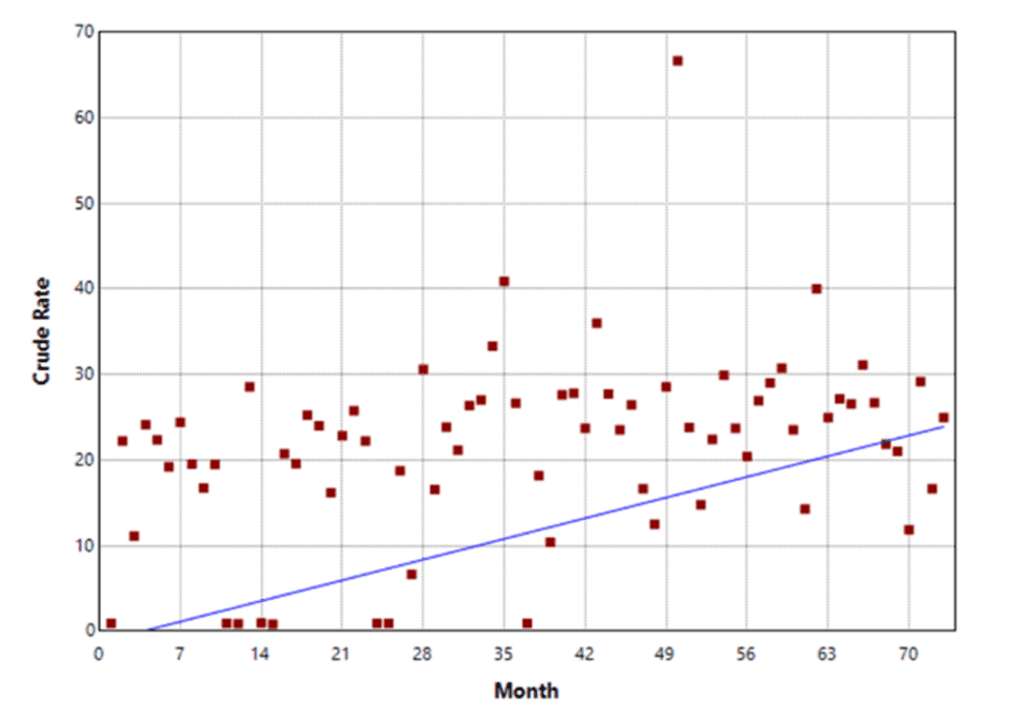About this Research Project
Authors: Jonathan R. Powell1, Morgan K. Anderson1, William Koehne2
1ImageTrend, Inc., Eagan, Minnesota
2Wisconsin Office of Preparedness and Emergency Health Care, Madison, Wisconsin
Introduction
Reports from professional rescuers have highlighted a large burden of motorcycle collisions involving animals in the state of Wisconsin. This is supported by data from the most recent five years of the National Highway Traffic Safety Administration’s Fatality Analysis Reporting System, which demonstrated that 60% of motor vehicle fatalities involved in wildlife-vehicle collisions were motorcyclists, and among the states, Wisconsin experienced the highest number of fatal motorcyclist crashes involving animals. Historically, emergency medical services (EMS) data have made it difficult to characterize such events, as event details are recorded in patient narratives rather than structured data elements. Existing structured data relying on ICD-10-CM codes does not distinguish between animals and pedestrians for these crashes. For that reason, free-text keyword search and narrative review were used to identify relevant cases, yielding a more promising approach to support further research on both animal and pedestrian crashes, development of targeted strategies for improved system and rescuer readiness, as well as pre-crash interventions that may aid in crash avoidance.
Objective
To systematically identify, characterize, and contextualize injuries sustained through wildlife-vehicle collisions among motorcyclists in Wisconsin by leveraging patient narratives from statewide EMS data.
Methods
A retrospective, cross-sectional study design was used for EMS activations in Wisconsin from January 2018 to December 2023. Relevant EMS activations with injury were selected using ICD-10 codes (e.g., V20, V21, V30, V39) and further parsed to identify injuries resulting from wildlife-vehicle collisions involving a motorcyclist, utilizing patient narratives. Narratives were flagged if they included animals documented by the Wisconsin Department of Natural Resources as being present in Wisconsin (e.g., turtle, snake, turkey, bear, elk) in addition to colloquial terms (e.g., animal, critter). Descriptive statistics (n, %; median, interquartile range) were calculated for activation characteristics. Crude rates of animal involvement per 100 motorcyclist collisions were also calculated.
Results
A total of 7,078 motorcycle-related motor vehicle activations with injury were identified, with 1,695 (24%) involving animals over the study period. Animal involved incidents had older patients (45[30-57] vs 41[27-56]) and a higher proportion of males (81% vs 79%), White, non-Hispanic patients (90% vs 84%) and treatment/transported disposition (78% vs 71%), but similar proportions across anatomic chief complaint system. Consistent seasonality was noted with a significant and consistent rise in motorcyclists involved in wildlife-vehicle collisions.
Conclusion
Use of free-text narratives allowed for the identification of motorcyclists involved in wildlife-vehicle collisions. Small proportional differences were noted among patient demographics and disposition outcomes. Results highlight the value of using unstructured EMS patient care report record data for identifying injury data phenotypes.
These methods and foundational data allow researchers to more accurately characterize the injuries sustained by motorcyclists, yielding substantive improvements to the domain of problem identification for this population. Findings have immediate utility to public health and safety professionals working to develop and implement countermeasures to reduce motorcyclist morbidity and mortality.
Table 1: Demographics of motorcycle injury-related collisions in Wisconsin from January 2018 to December 2023.
Figure 1: Distribution of monthly counts of animal-involved motorcycle injury collisions in Wisconsin, January 2018 to December 2023.
Figure 2: Crude rate of A, animal involvement per 100 overall motor vehicle crash activations for motorcyclists by ascending month, January 2018 to December 2023; and B, animal involvement per 100 overall wildlife-vehicle collision activations for motorcyclists by ascending month, January 2018 to December 2023.
Get the PDF
Related Resources


Tomorrow Won’t Look Like Today. Prepare for What’s Next.
See the bigger picture and confidently face the challenges ahead with our industry-leading solutions.





